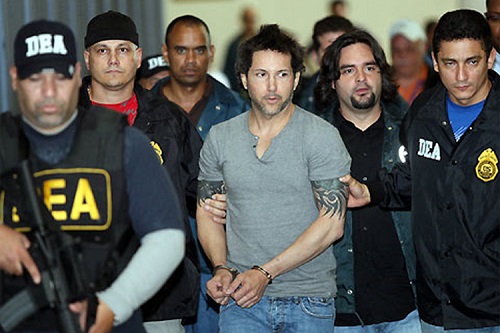By
Ricardo Swire
Global cocaine production is at historic levels. Patterns reflect increased circulation of drugs, cash and guns. The US Drug Enforcement Administration (DEA) Caribbean Division has noted unease about Dominican Republic (DR) headquartered opioid fentanyl labs. Opioids are drugs formulated to replicate pain reducing properties of opium. Law enforcement’s challenge is the legal painkillers morphine, oxycodone and hydrocodone plus illicitly made fentanyl and heroin. In 2014 4.9 billion oxycodone tablets were distributed across America.
In 2012 five percent of cocaine shipments landing in the US passed through the Caribbean. America’s annual report critical of DR’s anti-drug efforts. In 2015 the Caribbean’s transiting drugs amount was thirteen percent. 2015 was also the year senior DR Anti-Narcotics Police officers were accused of stealing more than one metric ton of confiscated cocaine. Ninety percent of the DR’s organized crime involves security forces collusion. In 2008 seven Colombian drug traffickers were killed in the DR by rogue internal security force members.
The twenty man syndicate, comprised mostly DR Navy members, stole 1.3 tons of cocaine from the Colombians traffickers. In another scenario a DR Naval Officer, responsible for port security, tried to smuggle more than 800 kilos or 1,760 pounds of cocaine to Spain aboard a cargo ship. Puerto Rico (PR) is another CARICOM internal security intelligence officials concern. PR’s auspicious location in the central Caribbean qualifies the island as precious to Washington. PR’s coastline offers more than seven hundred miles of rough terrain that provides secret hideouts, advantageous for traffickers.
US decision makers have apportioned more than US$51 billion yearly to fight PR’s drugs war, but border funding is overlooked. With controlling local drug consumption as Washington’s displaced preoccupation overwhelming drug entries, via its offshore Caribbean territory, escaped planners. This Puerto Rican national administrative weakness is exploited by organized crime elements. Estimates suggest 87,550 kilos of cocaine circulate via PR to America yearly. Twenty percent interdicted by counter-narcotics enforcement.
CARICOM’s intelligence data catalogs “Junior Cápsula,” a high-value Puerto Rican criminal character, who successfully smuggled three metric tons of Colombian cocaine to the world’s biggest market. A US indictment confirmed him as the organizer of ninety percent of drugs transiting both PR and the DR. Junior Cápsula, aka “Pablo Escobar of the Caribbean,” stayed one step ahead of law enforcement using fake identities and plastic surgery. Before arrest he owned real estate valued US$80 million and twenty luxury vehicles. A law enforcement patrol found one of Junior Capsula’s cars abandoned in the DR. The vehicle was transporting US$4 million cash and a supply of watches worth US$1 million.
The Caribbean Kingpin’s network purchased Colombian cocaine then transported it to immediate neighbor Venezuela and the DR. A US Justice Department file described how the Puerto Rican crime syndicate used private yachts to transfer cash worth millions of dollars to the DR. The Caribbean’s special hub registers an average one hundred and twenty metric tons of transiting cocaine annually. Between 2009 and 2014 drugs passing through the Caribbean tripled. During the first half of 2017 counter-narcotics operations recorded a series of multi-ton cocaine confiscations.
Ricardo Swire
Ricardo Swire is the Principal Consultant at R-L-H Security Consultants & Business Support Services and writes on a number of important issues.



No Comments Yet!
You can be first to comment this post!